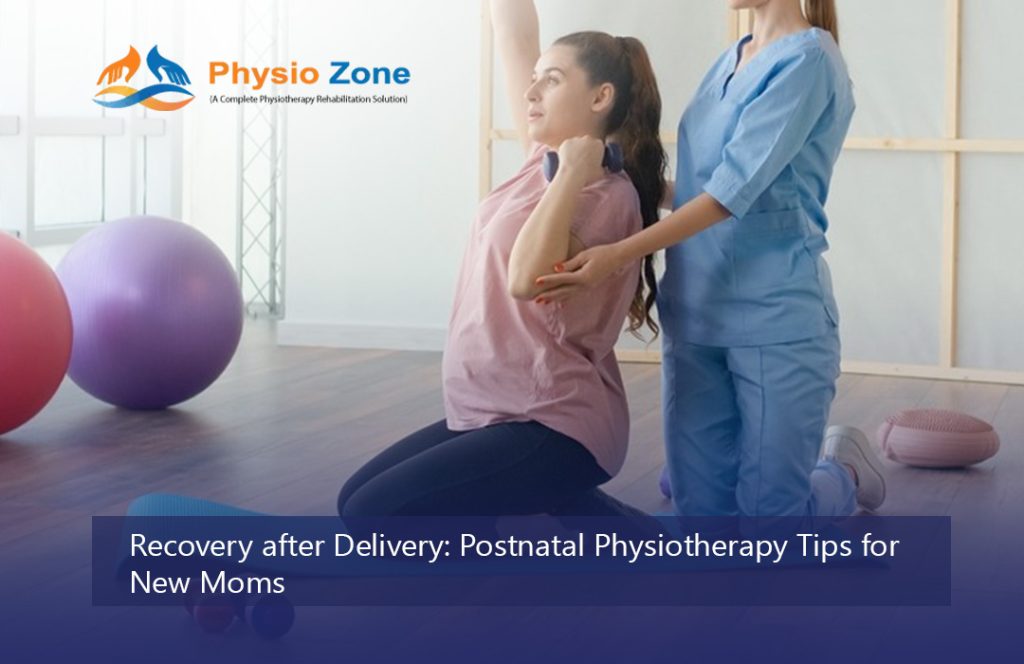Pregnancy and childbirth bring immense joy, but they also place significant stress on a new mother’s body. Proper care after childbirth is essential to restore physical and emotional health. Recovery after Delivery can be significantly enhanced through targeted postnatal physiotherapy tips, helping new moms regain strength, mobility, and confidence.
Importance of Postnatal Physiotherapy in Recovery after Delivery
Postnatal physiotherapy plays a crucial role in healing after childbirth. It helps improve muscle strength, reduce pain, and restore normal movement. Regular physiotherapy ensures faster recovery after delivery, prevents long-term complications, and supports overall well-being.
Common Challenges in Recovery after Delivery
New mothers often face several physical and emotional challenges, including:
- Weak core and pelvic muscles
- Back and pelvic pain
- Fatigue and stress
- Emotional fluctuations
These challenges highlight why structured postnatal physiotherapy tips are essential for smooth recovery after delivery.
Safe Postnatal Physiotherapy Tips for Faster Healing
Following safe physiotherapy practices accelerates recovery after delivery:
- Gentle stretching and walking exercises
- Pelvic floor strengthening routines
- Avoiding heavy lifting initially
- Gradually increasing activity levels
Adhering to these tips ensures healing is safe, effective, and sustainable.
Recovery after Delivery and Core Muscle Healing
Pregnancy weakens abdominal muscles and the core. Postnatal physiotherapy tips focused on core rehabilitation can:
- Restore abdominal strength
- Improve posture
- Support daily functional movements
Simple exercises such as gentle pelvic tilts and bridging can be started under professional guidance.
Postnatal Physiotherapy Tips for Back and Pelvic Pain
Back and pelvic discomfort are common during postpartum recovery. Targeted physiotherapy can help by:
- Reducing muscle tension
- Improving spine alignment
- Supporting the pelvis for daily activities
Therapists may recommend techniques like stretching, light resistance training, and postural adjustments.
Recovery after Delivery with Breathing & Relaxation
Proper breathing techniques and relaxation exercises can enhance recovery after delivery. Deep breathing:
- Improves oxygen supply to muscles
- Reduces stress and anxiety
- Supports overall recovery
Incorporating mindfulness and relaxation sessions ensures a holistic postnatal healing process.
Nutrition and Lifestyle Tips with Postnatal Physiotherapy
Diet and lifestyle choices complement physiotherapy efforts. Essential tips include:
- Consuming nutrient-rich foods for muscle repair
- Staying hydrated
- Ensuring adequate rest and sleep
- Avoiding processed foods and excessive sugar
A balanced approach accelerates recovery after delivery and supports long-term health.
When to Seek Professional Help in Recovery after Delivery
Sometimes, self-care may not be enough. Seek professional physiotherapy support if you experience:
- Persistent pain beyond 6–8 weeks
- Difficulty controlling pelvic floor muscles
- Severe fatigue or emotional stress
Professional guidance ensures safe and effective healing, preventing long-term complications.
Emotional Wellbeing in Recovery after Delivery
Recovery is not only physical but also emotional. Structured postnatal physiotherapy tips can help boost confidence, reduce anxiety, and enhance overall mental health. Emotional support is as important as physical care during recovery after delivery.
Final Thought
Recovery after Delivery is a journey that requires patience, care, and structured support. Following professional postnatal physiotherapy tips ensures new moms regain strength, mobility, and confidence safely. Early intervention, proper exercises, and lifestyle adjustments are key to long-term well-being.
Frequently Asked Questions (FAQs)
How long does recovery after delivery usually take?
Recovery varies per individual but generally takes 6–12 weeks, depending on childbirth type and overall health.
Can postnatal physiotherapy be done at home?
Some exercises can be safely performed at home, but professional guidance ensures effectiveness and prevents complications.
When should I start postnatal physiotherapy?
Physiotherapy can begin a few days after childbirth for gentle exercises, or after your doctor’s clearance, depending on the delivery type.
What are the benefits of physiotherapy after delivery?
A: It restores core strength, improves posture, reduces pain, supports pelvic health, and aids emotional well-being.
Are there any risks in doing physiotherapy too early?
Yes, starting intensive exercises too soon may strain muscles and prolong healing. Always consult a professional.
Can physiotherapy help with emotional recovery?
A: Absolutely. Structured exercises, relaxation, and guided sessions reduce anxiety and improve mood.
Where can I find professional postnatal physiotherapy services?
Trusted centers like PhysiozoneBD provide expert postnatal physiotherapy care tailored for new moms.

